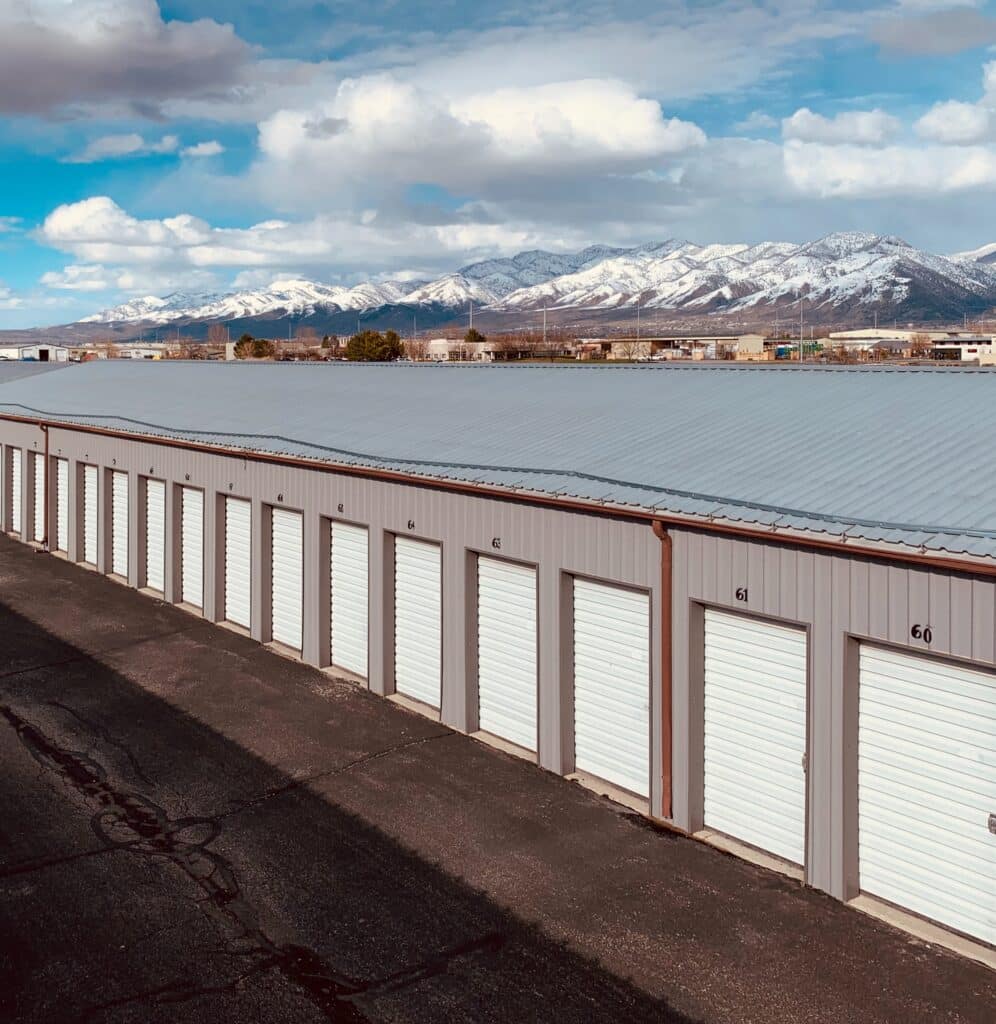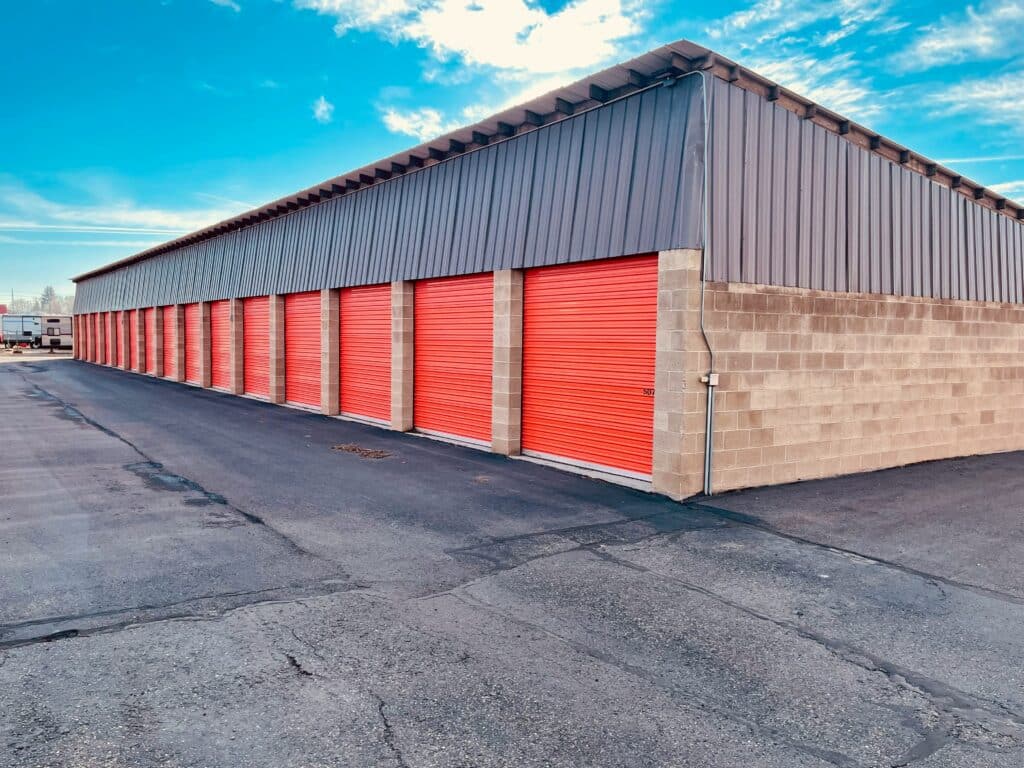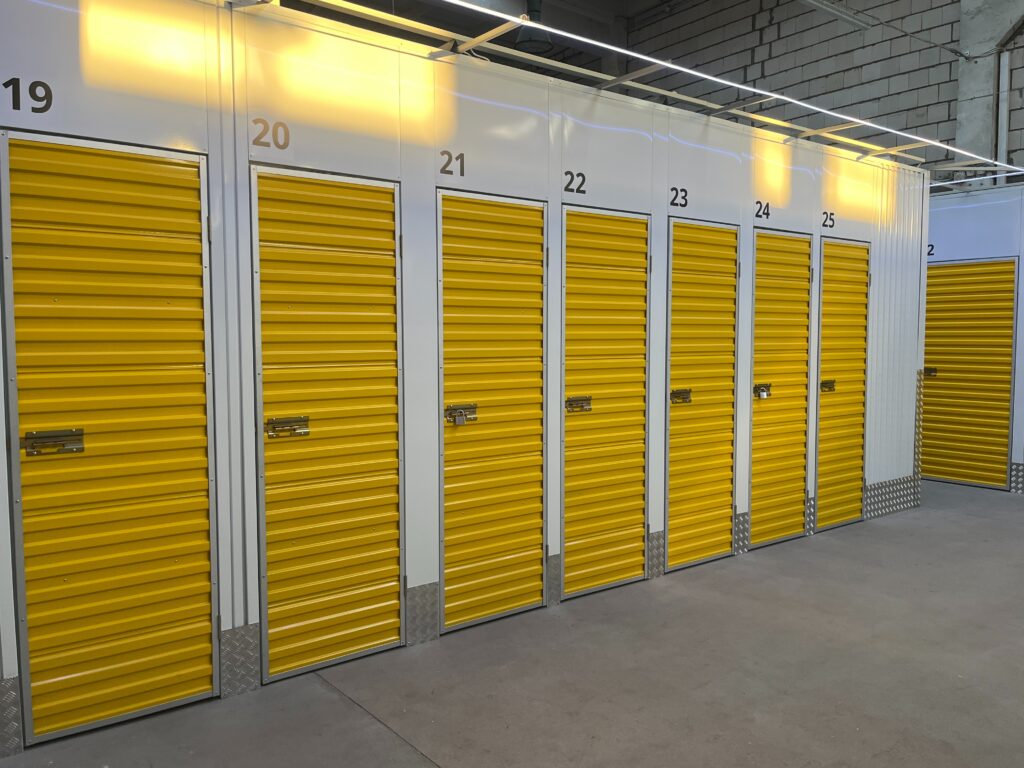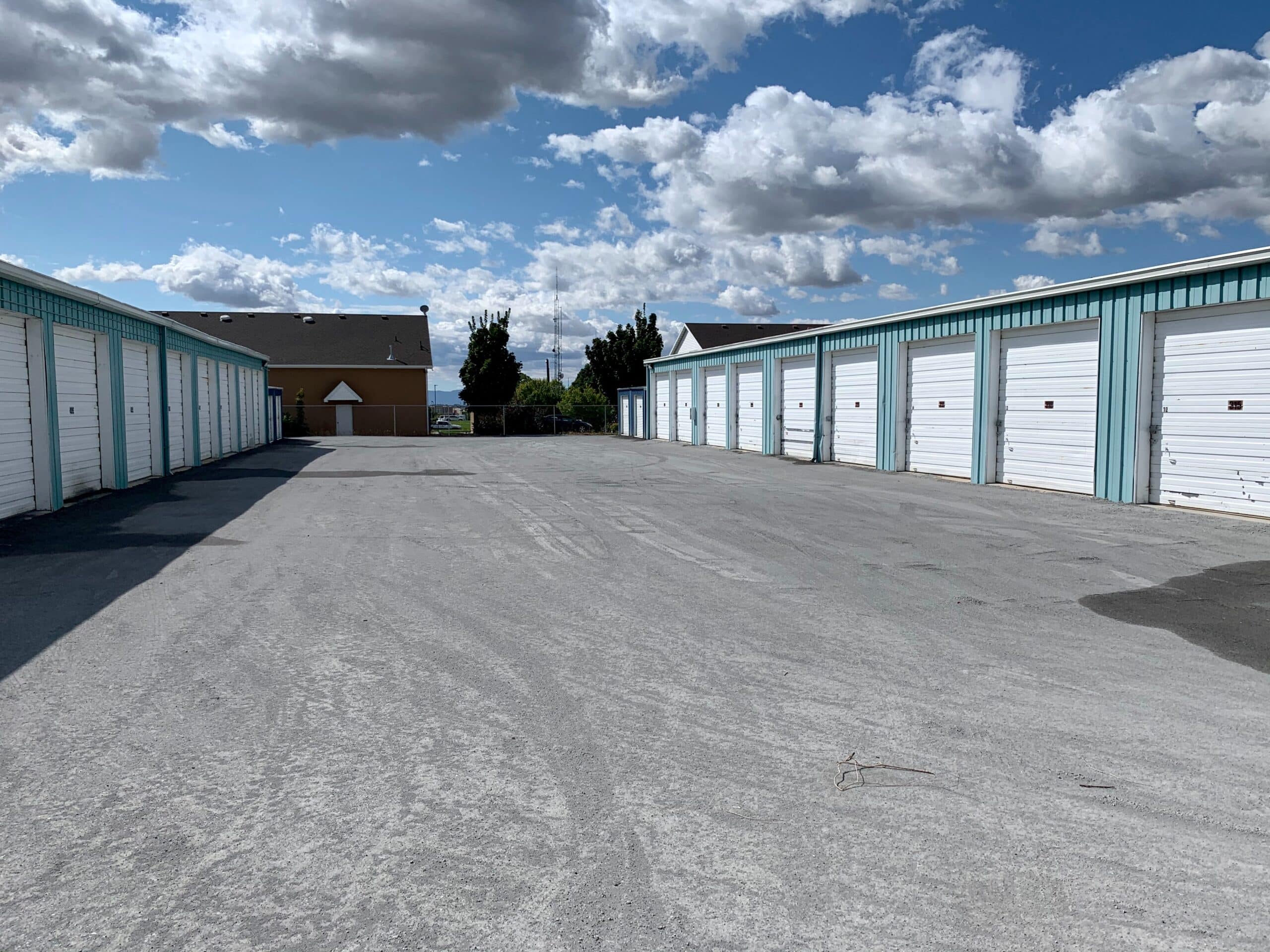When it comes to self storage security guard replacement, advanced technologies have taken the lead. This article provides a crisp overview of contemporary alternatives to traditional guards, from AI-driven surveillance systems to remote monitoring options, all designed to amplify security at your facility while curbing expenses.
Key Takeaways
- Self-storage security is increasingly relying on technology, including high-definition cameras, AI, and remote monitoring, to deliver faster and more precise responses to security threats, replacing traditional security guards.
- Upgrades to modern security systems in self-storage offer numerous benefits such as better protection through enhanced monitoring and threat detection, long-term cost savings over traditional security guard expenses, and improved customer trust and loyalty due to increased security measures.
- Alternatives to security guards for self-storage facilities include remote video monitoring systems for real-time incident response, smart security cameras with AI for threat identification, and access control systems to regulate facility access, enhancing overall security.
The New Era of Self Storage Security

Self-storage security is undergoing a transformative phase, underscored by the emergence of advanced technology and remote monitoring. These developments are rapidly replacing traditional security guards, offering a more effective and robust protection for self-storage facilities. The core of this transformation lies in high-definition security cameras, artificial intelligence, and live remote monitoring systems, which together deliver real-time protection and immediate interventions.
This new era of self-storage security is all about precision and rapid response to security threats. Some key features of this advanced security system include:
- Surveillance cameras powered by artificial intelligence that can identify potential threats
- Superior video surveillance that ensures precise evaluation and real-time protection
- Enhanced customer satisfaction due to the commitment to security, which deters crime and theft
These features help to cement the reputation of many self-storage facilities in the eyes of their customers.
The Rise of Remote Video Surveillance
Remote video surveillance is a security solution that’s making waves in the realm of self-storage security. This technology offers real-time monitoring from a remote location, providing a level of protection that surpasses that of traditional security guards. High-definition cameras, strategically placed around the property, enable trained security professionals to oversee a facility from off-site locations, providing comprehensive coverage.
The operational features of remote video surveillance systems are what truly set them apart. From timely alarm activation alerts and proactive identification of suspicious situations to two-way speakers for on-site communication, remote video surveillance systems offer a host of advantages, including:
- Minimizing false alarms through real-time incident verification
- Continuous real-time surveillance
- High-quality footage
- Improved efficiency in emergency response
- Cost-effectiveness
These features make remote surveillance, particularly remote video surveillance systems with surveillance camera, a valuable tool for security purposes, thanks to the advancements in video surveillance technology.
Artificial Intelligence and Motion Detection
Artificial intelligence (AI) and motion detection technology are revolutionizing self-storage security. These technologies, with their quick identification of suspicious activity and potential threats, significantly improve the overall security and efficiency of self-storage facilities. The key to this lies in the integration of artificial intelligence with camera systems, which enhances their visual capabilities and facilitates timely alerts for issues that require immediate attention. Some benefits of AI and motion detection technology in self-storage security include:
- Quick identification of suspicious activity
- Real-time alerts for potential threats
- Enhanced visual capabilities of camera systems
- Improved overall security and efficiency of self-storage facilities
By utilizing these technologies, self-storage facilities can provide a safer and more secure environment for their customers, including those using self storage units or a self storage unit.
The AI hub, a central component of the security system, serves to analyze security footage and send out notifications when it detects a potential threat. By doing so, it ensures prompt response times and contributes to the overall effectiveness of the live monitoring system. With AI and motion detection technologies, self-storage facilities can now enjoy a level of protection that was previously unimaginable.
Benefits of Upgrading Your Security System

Upgrading to a modern security system is not just about keeping up with the latest technology – it’s about reaping the numerous benefits that come with it. The implementation of a modern security system allows self-storage facilities to benefit from enhanced protection, significant cost savings, and increased customer trust.
Advanced security measures effectively mitigate potential costly and damaging incidents, ultimately elevating the level of protection provided by the facility. Furthermore, digital access control, automated delinquency processes, and enhanced unit security contribute to more efficient and cost-effective operation for self-storage businesses.
Lastly, features such as real-time monitoring, immediate alerts, and user-friendly access significantly enhance the storage experience, leading to increased customer loyalty and trust.
Enhanced Protection
Advanced security systems play a significant role in strengthening protection for self-storage facilities. These systems include:
- Surveillance cameras
- Access control systems
- Alarm systems
- Motion sensors
By employing these systems, self-storage facilities can offer a comprehensive defense against theft and unauthorized access.
Artificial intelligence takes this protection to the next level by:
- Facilitating continuous monitoring
- Identifying abnormal activity and potential security threats
- Evaluating access patterns
- Issuing immediate alerts
Together with remote video surveillance systems, which enable live monitoring by trained security professionals, AI provides a robust security solution that effectively enhances the overall protection of self-storage facilities.
Cost Savings
Though the initial costs of installing a modern security system may appear high, the long-term financial benefits are undeniable. The costs associated with installing security cameras and access control systems, along with monthly monitoring fees, are typically less than the ongoing costs linked to employing traditional security guards.
Despite the upfront costs, contemporary security solutions present a more economical option in the long run. By enabling digital access control, automating delinquency processes, facilitating online move-ins, and enhancing unit security, these systems contribute to a more efficient and cost-effective operation for self-storage businesses.
Improved Customer Trust
Trust plays a significant role in the realm of self-storage. Customers need to feel confident that their belongings are secure. By implementing advanced security measures, self-storage facilities can significantly enhance customer trust and satisfaction.
Informing customers about the security measures in place can alleviate any apprehensions and foster trust. In addition, implementing remote video monitoring can enhance client satisfaction by improving safety and efficiency, thereby fostering increased customer trust and satisfaction.
Ultimately, a secure storage experience leads to increased customer loyalty, which is essential for maintaining a positive business reputation and achieving success.
Top Security Guard Replacement Options
As we move away from traditional security guards, it’s important to consider the top alternatives. Three effective and efficient alternatives to security guards have emerged: remote video monitoring, smart security cameras, and access control systems.
Remote video monitoring offers real-time surveillance and a rapid response to potential threats. Smart security cameras, equipped with artificial intelligence and motion detection technology, provide enhanced security by identifying suspicious activity in real time. Finally, access control systems regulate who can enter the facility, adding an extra layer of security.
Remote Video Monitoring
Remote video monitoring offers real-time surveillance and a swift response to potential threats, proving highly effective as a security solution for self-storage facilities. By utilizing live remote camera systems, remote video monitoring ensures the safety of self-storage facilities and prevents theft or unauthorized access.
The real-time observation of various locations from any remote location offers improved security and surveillance functionalities. Despite the initial installation and regular monthly maintenance expenses, live video monitoring typically presents a more economical option in the long run when compared to the ongoing costs linked to employing traditional security guards.
Smart Security Cameras
Smart security cameras are transforming self-storage security by:
- Utilizing AI to automatically identify threats and potential risks
- Eliminating false alarms
- Expediting the alerting of security personnel to actual dangers.
Smart security cameras are equipped with a variety of features, such as:
- Remote video monitoring
- Two-way audio communication
- Motion detection alerts
- Wide dynamic range
- Triggered activation
- Remote monitoring
- Wireless communication
- AI-powered facial recognition
- Object detection
- Cloud storage capabilities
With smart security cameras, self-storage facilities can now enjoy a level of protection that was previously unimaginable.
Access Control Systems
Access control systems heighten security by controlling who can access the facility. These systems encompass attributes such as:
- meticulously designed access control solutions
- heightened convenience for both customers and management
- incorporation of access-control technology at primary entry points
- provisions for keyless entry using keypads or Bluetooth gate access.
The top-rated access control systems for self-storage facilities are:
- Doorking
- LenelS2
- Kisi
- SpiderDoor
- ButterflyMX
By integrating these systems with other security measures, self-storage facilities can enhance their overall security and provide a seamless operation and coordination between the various security components.
Implementing a Modern Security System

The implementation of a modern security system entails a series of equally important steps. Whether it’s assessing the facility’s needs, installation and setup, or employee training, each step is crucial to ensure the effectiveness of the security system.
Thoroughly assessing the facility’s needs marks the first step in implementing a modern security system. This involves a thorough understanding of the security requirements of the facility, based on which the necessary security measures can be implemented.
The next step involves the actual installation and setup of the system, which requires a meticulous approach to ensure effectiveness.
Finally, training employees on how to use and maintain the new security system is crucial to ensure its continued effectiveness and efficiency.
Assessing Your Facility’s Needs
To evaluate a self-storage facility’s security requirements, the facility should take into account various factors such as:
- Visibility and deterrence through proper lighting
- Monitoring activities with video surveillance
- Restricting unauthorized access with good fencing
- Implementing secure access systems like entry gates or key cards
- Using robust disc locks for storage units
Typical security features that a self-storage facility may require include:
- A secure fence
- Video surveillance cameras
- Motion sensors
- Access control systems
- Adequate lighting
- Alarms and security systems
- Regular security patrols and monitoring
Thoroughly assessing these needs is the first step towards implementing a modern security system that effectively meets the security requirements of the facility.
Installation and Setup
Correct installation and setup are fundamental to a security system’s effectiveness. When installing security cameras, it is crucial to consider:
- Purchasing cameras with high resolution, motion detection, and infrared capabilities that are tailored for such properties
- Properly selecting the appropriate type of security cameras
- Implementing video analytics
These are essential steps for installation.
When installing an access control system, it is important to consider factors such as installing surveillance cameras, choosing electronic keypads or Bluetooth unit locks for access control, leveraging mobile apps for easy access, the facility’s size, security requirements, tenant convenience expectations, budget, and additional protections like perimeter fencing. To prevent errors during the installation and setup of a security system, it is important to consider HVAC systems during planning, engage the services of an experienced professional contractor familiar with self-storage facilities, allocate space for security features such as perimeter fencing and access gates, and plan in advance for the installation of specific equipment.
Employee Training
Training employees on the use and maintenance of the new security system is a frequently overlooked, yet vital component of implementing a modern security system. A comprehensive training program should encompass:
- Online training materials
- Simulations of real cyberattacks
- Thorough knowledge assessments
- Regular refresher courses
- Utilization of risk scoring to evaluate proficiency.
Employees should undergo regular training sessions focused on the operation of remote video monitoring systems. This should cover topics such as:
- The use of video analytics tools
- Secure handling of remote devices
- Software utilization
- System setup in accordance with facility requirements
- Integration with other security tools
It is recommended to conduct regular training sessions at least twice a year to maintain staff competency in utilizing the security systems and effectively responding to incidents.
Overcoming Common Concerns
The implementation of a modern security system comes with its own set of challenges. Common concerns related to privacy, reliability, and connectivity can pose significant hurdles. However, these concerns can be effectively addressed by:
- Ensuring compliance with relevant regulations
- Maintaining a reliable and strong connection
- Creating a balance between human intervention and technology.
Privacy concerns can be mitigated by storing sensitive data securely, establishing a comprehensive network security policy, and utilizing data protection tools. To ensure reliability and connectivity, robust security measures such as firewalls, intrusion detection systems, and encryption protocols can be implemented. Furthermore, frequent updates and patches to software and firmware can protect against vulnerabilities.
Lastly, creating a balance between human intervention and technology can result in an effective security system that combines the best of both worlds.
Privacy Issues
Privacy is a significant concern in the contemporary digital world. In order to comply with privacy regulations, self-storage operators should incorporate a disclosure statement outlining the utilization of personal information and introduce measures such as surveillance cameras, controlled access, and property maintenance.
Legal obligations related to video surveillance vary by state, and it is crucial for self-storage operators to ensure that their marketing is truthful and compliant with these legal obligations. Moreover, effective communication of a surveillance system’s purpose to customers involves developing strategies that cater to their needs and emphasizing the security benefits offered by the system.
Ultimately, the role of encryption in improving privacy within self-storage security systems cannot be overstated.
Reliability and Connectivity
Continuous connectivity in security systems is vital. It guarantees:
- Uninterrupted communication with the monitoring center
- Immediate alerts and notifications during emergencies
- Access to live feeds and recorded footage from security cameras
To maintain uninterrupted connectivity of their security systems, self-storage facilities conduct regular maintenance of essential components such as gates, keypads, and alarms. However, if a security system experiences connectivity loss, potential implications may include a lack of alerts and notifications due to loss of communication with the monitoring center, video loss in IP-based cameras, and an increased risk of cyberattacks and unauthorized access.
To mitigate these risks, it is crucial to:
- Ensure that software is regularly updated with patches to address vulnerabilities
- Implement encryption for wireless data
- Utilize firewalls to protect against malicious traffic.
Balancing Human Intervention
Despite the significant role of technology in self-storage security, the human element is equally important. Balancing human intervention with advanced technology is key to creating an effective security system. By leveraging AI software to delegate time-consuming tasks and collaborate efficiently with human analysts, technology can be utilized to enhance human intervention in a security setup.
As the industry shifts towards a blend of human and technological elements in property security, human intervention continues to play a crucial role in rectifying technological failures in security systems. By adapting to change, reducing human-enabled security failures, and complementing technology, human intervention can enhance the overall security of self-storage facilities.
Summary
In conclusion, the shift from traditional security guards to advanced technology has revolutionized self-storage security. By implementing modern security solutions such as remote video monitoring, smart security cameras, and access control systems, self-storage facilities can enjoy enhanced protection, significant cost savings, and improved customer trust.
Whether you’re a self-storage facility owner looking to upgrade your security system, or a customer keen on ensuring the safety of your belongings, it’s clear that the future of self-storage security lies in the integration of technology. By embracing these modern security solutions, we can look forward to a safer and more secure future for the self-storage industry.
Frequently Asked Questions
What is remote video surveillance?
Remote video surveillance allows you to view, manage, and operate video cameras from a distance, whether it’s accessing a live feed or managing a system entirely offsite.
Can you access security cameras remotely?
Yes, you can access security cameras remotely by using a mobile app or viewing software and connecting the cameras to your Wi-Fi network. This allows you to enjoy live streaming of surveillance on your smartphone or desktop.
How do remote surveillance cameras work?
Remote surveillance cameras work by connecting to a Wi-Fi network and transmitting captured footage over the internet to a receiver, such as a router or cloud-based server, allowing for remote access.
What’s the difference between surveillance cameras and security cameras?
The main difference between surveillance cameras and security cameras is their purpose. Security cameras are used to protect a property, while surveillance cameras are optimized to monitor and capture video footage for evidence. Therefore, security cameras are for protection, while surveillance cameras are for observation and evidence collection.
What is stealth monitoring do?
Stealth monitoring software helps in preserving property, work time, and attendance, similar to video cameras and electronic sensors.
